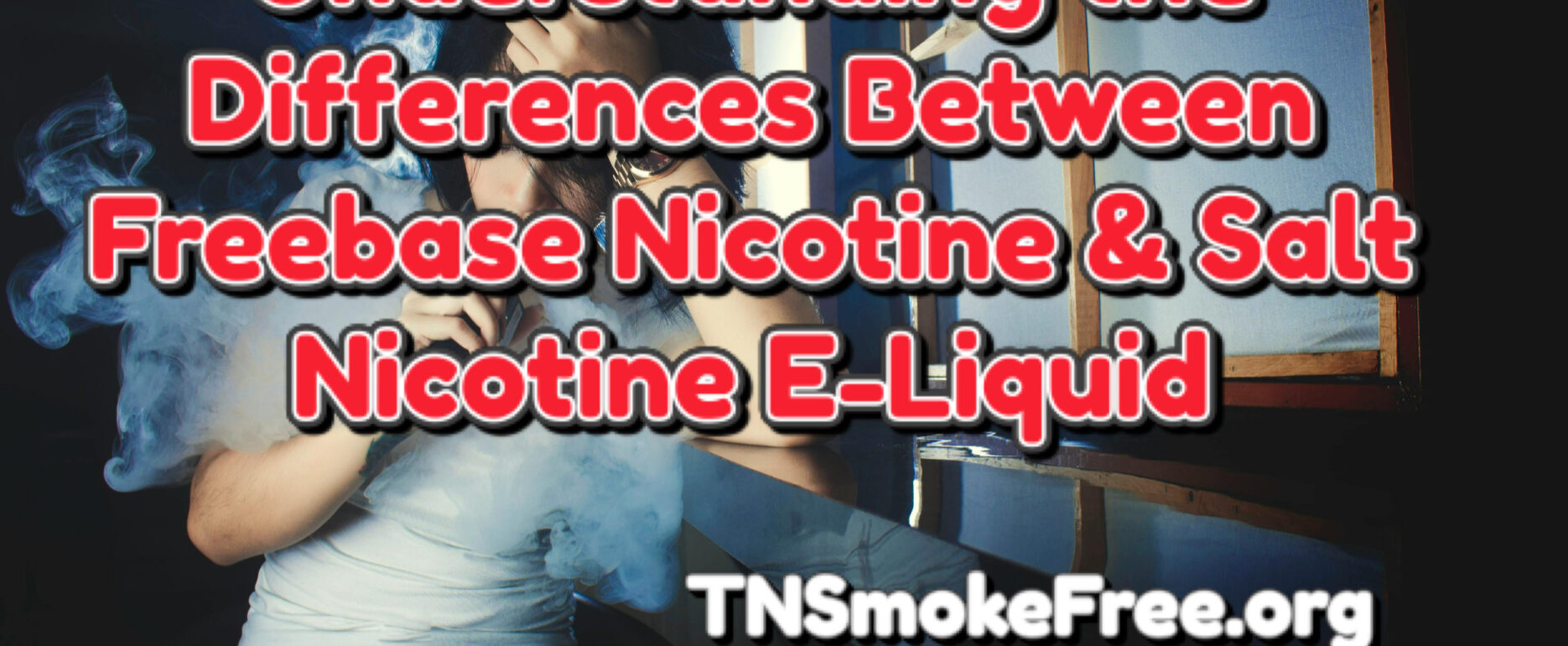Tennessee Smoke Free Association (TSFA)
July 25th, 2025

Understanding the Differences Between Freebase Nicotine and Salt Nicotine E-Liquid
The vaping industry has seen significant innovation and diversification since its inception, particularly regarding the types of nicotine used in e-liquids. Among the most notable are freebase nicotine and salt nicotine e-liquids. Each type has unique characteristics, benefits, and uses, influencing consumer preference and experience.
What is Freebase Nicotine?
Freebase nicotine is the purest form of nicotine, with a chemical structure that allows it to be absorbed quickly into the bloodstream. It is derived from tobacco leaves through a process of distillation where the nicotine is separated from the other components, resulting in a potent nicotine solution.
Characteristics of Freebase Nicotine:
– Higher pH Level: Freebase nicotine has a higher pH level, which can make it harsher on the throat, especially at higher concentrations.
– Usage in Standard Devices: It’s commonly found in e-liquids designed for sub-ohm vaping, allowing for larger clouds and a more robust flavor experience.
– Lower Nicotine Concentration: Freebase nicotine typically ranges from 0 mg to 18 mg/ml, making it less suitable for users who prefer very high levels of nicotine.
What is Salt Nicotine?
Salt nicotine, also known as nicotine salts, is a form of nicotine that is chemically altered to create a smoother vaping experience. This modification helps to lower the pH level of the nicotine, making it easier to inhale and more appealing to users, especially those new to vaping. Nicotine salts can be extracted from the tobacco leaf or synthesized in laboratories.
Characteristics of Salt Nicotine:
– Lower pH Level: The lower pH makes salt nicotine smoother and less irritating to the throat, even at higher concentrations.
– Higher Nicotine Concentration: Salt nicotine e-liquids typically have higher nicotine concentrations, ranging from 20 mg/ml to even 50 mg/ml. This makes them a popular choice for former smokers looking for a quick nicotine fix.
– Usage in Pod Systems: Salt nicotine is generally designed for use in low-wattage devices such as pod systems, which deliver a more nicotine-dense experience without the harshness.
Key Ingredient Differences
The main ingredients in both freebase and salt nicotine e-liquids include nicotine, vegetable glycerin (VG), propylene glycol (PG), and flavorings. However, the key difference lies in the nicotine form:
– Freebase Nicotine Ingredients:
– Pure nicotine base
– High VG formulations are common for a denser vapor.
– PG can be used for flavor enhancement.
– Salt Nicotine Ingredients:
– Nicotine benzoate or other salt forms of nicotine are used to lower the pH.
– Benzoic Acid has been added as a fifth chemical compound. It is always included to defuse the high levels of salt nicotine from feeling as harsh.
– Generally higher PG ratios to enhance throat hit and flavor.
Comparison of Vaping Experience
The choice between freebase nicotine and salt nicotine often boils down to user preference and the desired vaping experience:
1. Throat Hit: Freebase nicotine may provide a more intense throat hit due to its higher pH, which some users may enjoy, while others may find it uncomfortable.
2. Nicotine Delivery: Salt nicotine’s formulation allows for a quicker nicotine intake and satisfaction, making it more suited for those transitioning from traditional smoking habits to vaping.
3. Device Compatibility: Freebase nicotine is better suited for advanced vaping devices, while salt nicotine is optimized for low-wattage devices, promoting efficient use of e-liquid.
Conclusion
In conclusion, the differences between freebase nicotine and salt nicotine e-liquids come down to chemical composition, user experience, and intended use. Freebase nicotine is ideal for those who prefer sub-ohm devices and a more robust throat hit, while salt nicotine caters to users looking for a smoother experience with higher concentrations. Understanding these differences can help consumers choose the right product that fits their vaping style and needs.
References
1. G.F. D’Agostino, et al. (2020). “The role of nicotine strength in e-liquids: A study of user preferences” Tobacco Control.
2. M. H. G. Chandra, et al. (2019). “Nicotine salts vs. freebase nicotine: an overview of contemporary e-liquids.” Journal of Psychopharmacology.
3. S. K. Smith, et al. (2021). “Impact of e-liquid nicotine type on user satisfaction.” Nicotine & Tobacco Research.
Download Article: Understanding the Differences Between Freebase Nicotine and Salt Nicotine E-Liquid 07.25.2025
The Tennessee Smoke Free Association (TSFA) is an advocacy group and trade organization with a focus on Tobacco Harm Reduction (THR) through the use of personal vaporizers (electronic cigarettes) and other smokeless tobacco products shown to reduce the morbidity and mortality associated with smoking. The TSFA was formed in 2014 to provide support and education regarding alternative methods of Tobacco Harm Reduction. We focus on the prevention of tobacco harm and seek to cooperate with the Tennessee Health Agencies to function for the greater health of the Tennessee public as well as monitor the legislation for or against our movement of tobacco harm reduction. You can learn more by visiting TNSmokeFree.org.
